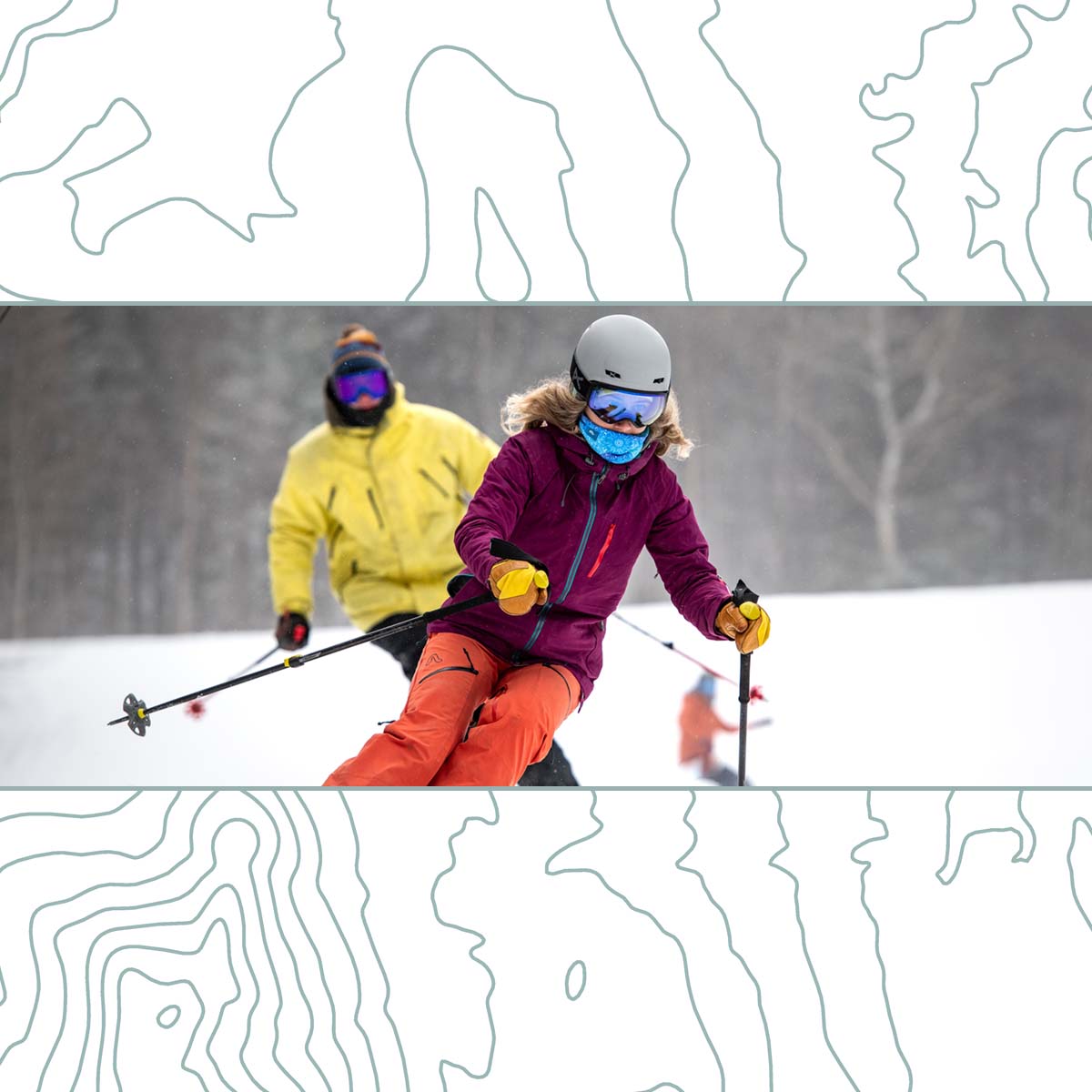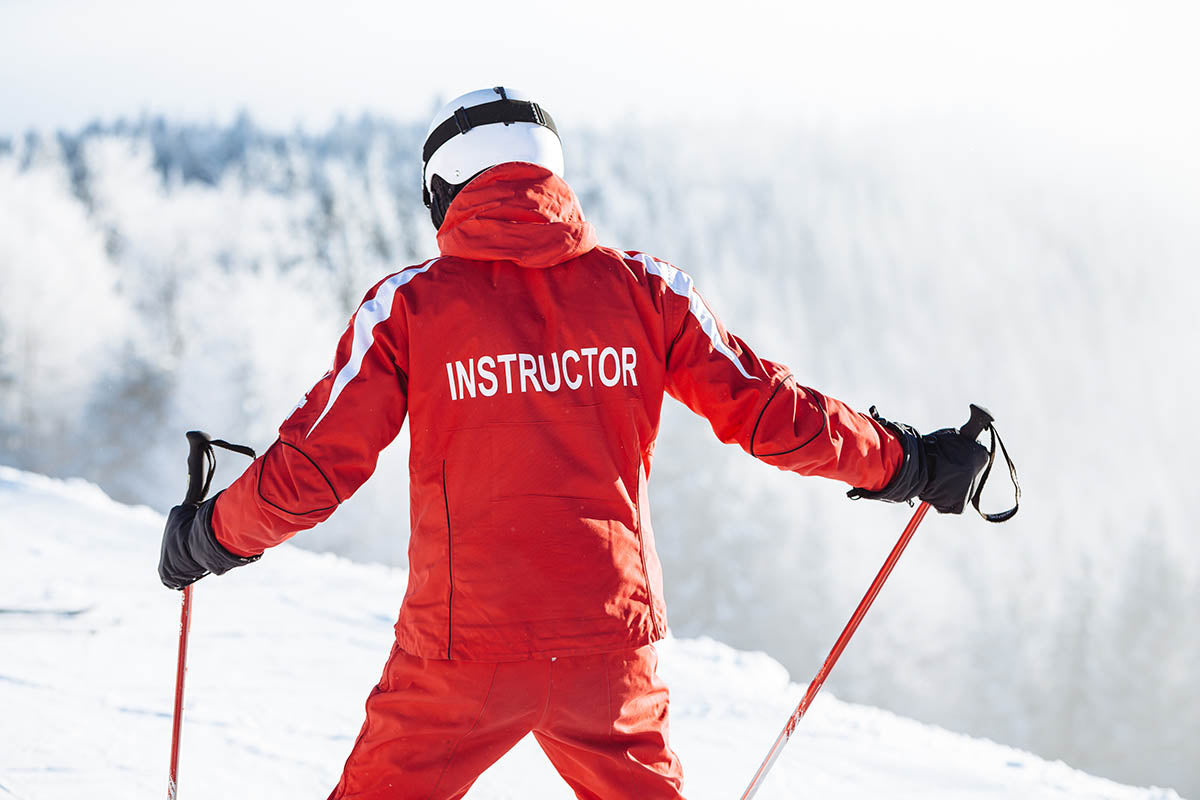Skiing for Beginners: 5 Tips from a Pro

Looking to get out on the slopes for the first time? Our VP & Director of eCommerce, Colin Giblin, shares his 5 tips for beginner skiers from his 15 years of ski instructing around New England.

Colin taught at Stowe, Cannon, Yawgoo Valley, Loon, and Tenney Mountain. His certifications include PSIA Level 2 & Children’s Specialist 2.
1. Plan Ahead
A day on the slopes requires preparation. Before you head out for the drive to the mountains, make a list of everything you’ll need and confirm you have it all. Check out this recent post on what to pack for a ski trip. These days you’ll likely have had to book your lift ticket, lesson, and rentals online, and in advance. You wouldn’t want to show up for your first planned day on snow to find out that all the instructors are completely booked or the rental shop ran out of your boot size!

2. Dress Appropriately
While it’s obvious you’ll need skis and boots, it may seem overrated to find specialized pants, gloves, helmet, and jackets all for something you aren’t sure you’ll enjoy. However, not wearing ski pants or durable gloves/mittens will make it much less likely that you’ll enjoy your day on the slopes. No one likes sitting in wet jeans or sweatpants, and cold fingers are never a good time.

Don’t let the potential cost of all that gear deter you though – these days you can rent just about everything. Sites like kitlender.com and slopethreads.com will ship clothing for skiing and snowboarding direct to your home, or better yet to the hotel or condo where you’ll be staying during your ski adventure. Services like those allow you to have like-new gear in modern colors and styles for a weekend of skiing for less than the cost of buying the jacket. You can also consider borrowing ski clothing from a friend or family member who wears a similar size.

Dressing appropriately also means sun safety. We often forget about the impact of the sun during the winter, but as it reflects off the snow, it can amplify the harmful UV rays. So be sure to remember sun screen, goggles, and a face mask or neck gaiter that is UPF 35+ or better. If you won’t be covering your nose and mouth with a neck gaiter, be sure to apply lip balm as well – burnt lips is a surefire way to ruin your après ski experience.

3. Start Small
Not all first days on snow have to happen at a major ski resort. You might be better served finding your local ski hill and taking an intro lesson or two before heading off on the big vacation. Most local hills are significantly cheaper than the major resorts, and often have great terrain for learning to ski. It’s also an opportunity for you to familiarize yourself with the gear, and what all is needed for a successful day on the mountain. Getting a day or two on the snow before your big vacation will make those mega resort days much more enjoyable, and you’ll feel significantly more prepared.

4. Take a Lesson - From a Pro
Everyone has a friend that says they can ski and odds are, they’re the reason you’re getting out there trying this sport. However, a friend that can ski is not always a friend that can teach. Every ski area has a ski school, and while you may be thinking “I’m too old to go to school with all the little kids”, they all offer a variety of lessons for all ages.

Learning to ski is a different experience for everyone. A six-year-old doesn’t move the same way that a 24-year-old or an 85-year-old does. Ski schools will break up their group lessons according to skill and age to make sure students are paired with the right groups.
Group lessons are usually the cheapest option, but if you’re looking for some extra 1:1 time, you can book a private lesson. You’ll be paired up with an experienced instructor who will be able to tailor the lesson to your exact skills.
Learning from a loved one is an age-old no-no in snowsports – they may be an instructor, or have years of experience – but just trust me on this one, and don’t do it.
5. Eat Well & Drink Plenty
Skiing and snowboarding use muscles you don’t use for other sports and activities, and after your first day or two you’re likely going to feel soreness in ways and places you didn’t know you could.
Eat a good breakfast the day you plan to go skiing and keep fueling up all day. You may not realize how many calories you’re burning throughout the day but be assured, it’s significant.
It may be tempting to have a drink at lunch – after all you are on vacation, the sun is shining, and you’ve seen it in the movies – but remember you’re out here participating in a sport. You’re going to want to maintain reaction times and motor controls.
Another reason you’ll want to skip the mid-day beer is the dehydrating effects of alcohol. Being outside in the sun and dry winter air is going to do a fine enough job of dehydrating you on its own. Remember to drink water every chance you get while spending a day on the slopes. Your muscles will thank you for it later.
After your day is done – do par-take in the après scene. It is one of skiing and snowboarding’s time-honored traditions and is as much a part of the sport as goggle tans and fleece neck warmers. These days more and more après spots are offering non-alcoholic options as well to make sure everyone is included.











